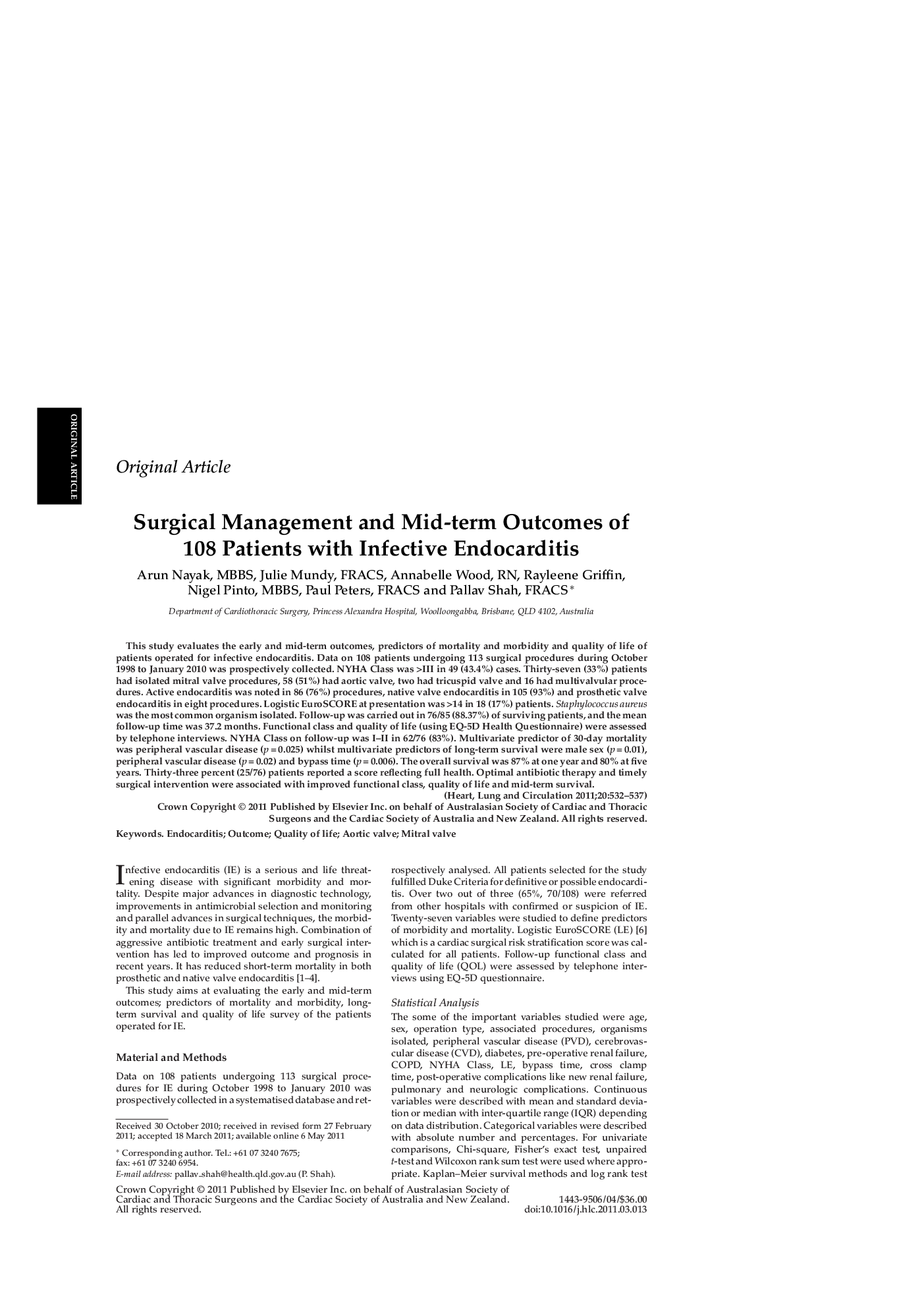| Article ID | Journal | Published Year | Pages | File Type |
|---|---|---|---|---|
| 2919294 | Heart, Lung and Circulation | 2011 | 6 Pages |
This study evaluates the early and mid-term outcomes, predictors of mortality and morbidity and quality of life of patients operated for infective endocarditis. Data on 108 patients undergoing 113 surgical procedures during October 1998 to January 2010 was prospectively collected. NYHA Class was >III in 49 (43.4%) cases. Thirty-seven (33%) patients had isolated mitral valve procedures, 58 (51%) had aortic valve, two had tricuspid valve and 16 had multivalvular procedures. Active endocarditis was noted in 86 (76%) procedures, native valve endocarditis in 105 (93%) and prosthetic valve endocarditis in eight procedures. Logistic EuroSCORE at presentation was >14 in 18 (17%) patients. Staphylococcus aureus was the most common organism isolated. Follow-up was carried out in 76/85 (88.37%) of surviving patients, and the mean follow-up time was 37.2 months. Functional class and quality of life (using EQ-5D Health Questionnaire) were assessed by telephone interviews. NYHA Class on follow-up was I–II in 62/76 (83%). Multivariate predictor of 30-day mortality was peripheral vascular disease (p = 0.025) whilst multivariate predictors of long-term survival were male sex (p = 0.01), peripheral vascular disease (p = 0.02) and bypass time (p = 0.006). The overall survival was 87% at one year and 80% at five years. Thirty-three percent (25/76) patients reported a score reflecting full health. Optimal antibiotic therapy and timely surgical intervention were associated with improved functional class, quality of life and mid-term survival.
